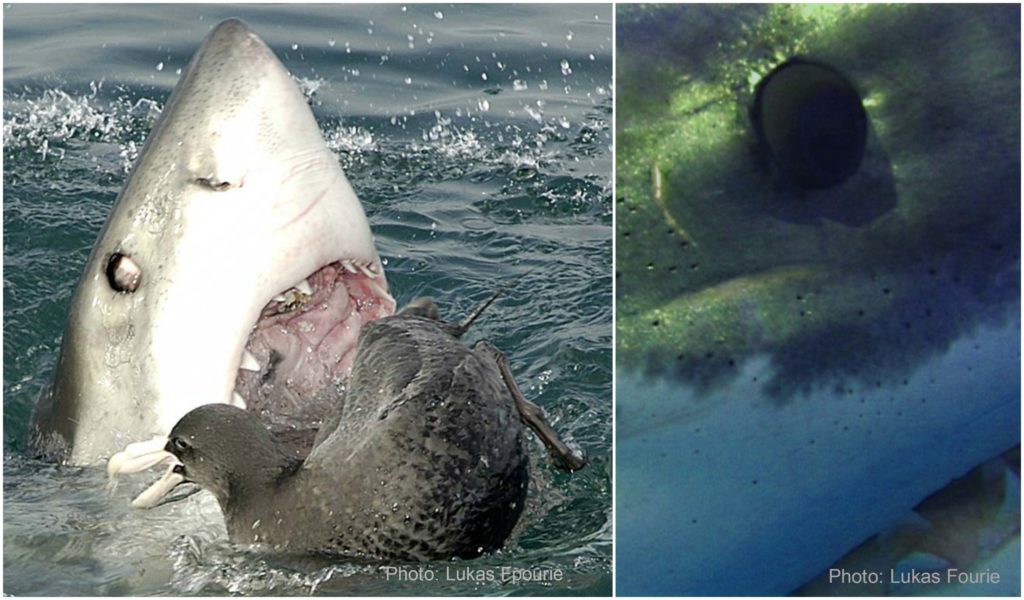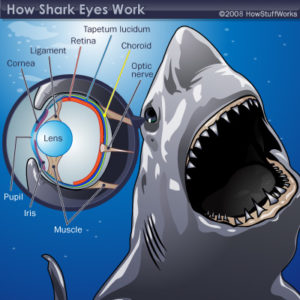SHARK EYESIGHT

A shark’s eyes are almost on completely different sides of its head, so the shark has a nearly 360-degree field of Vision. However, they have two major blind spots; right in front of the snout and right behind the head.
 Sharks’ eyes are built just like ours
Sharks’ eyes are built just like ours
A shark’s eye is similar to the eye of other vertebrates, with many parts that we’d recognize: a lens, a retina, an iris and a cornea. Shark eyes have duplex retinas, or retinas containing both rod and cone cells. Rods enable the shark to see light and darkness, while cones allow for the detection of colour (scientists are still unsure how sharks interpret colours).
Sharks can see even in dark or murky water
Unlike humans, shark eyes are equipped with a layer of mirrored crystals located behind the retina. This provides a means for light to be detected a second time. Light is de-focused, acuity reduced and sensitivity increases. Such an adaptation enables sharks to see even in low light and dark or murky water and up to ten times greater than humans in clear water.
Also unlike humans, shark eyelids serve to protect the eye when attacking prey. Some sharks have a clear membrane that covers and protects the eye when a shark bites its prey. Great White Sharks lack this membrane and therefore roll their pupils back in their heads for protection when feeding.
protects the eye when a shark bites its prey. Great White Sharks lack this membrane and therefore roll their pupils back in their heads for protection when feeding.
The size and shape of the eye vary for different sharks
The feeding habits of sharks also influence eye size, whereas sharks who feed on larger, fast-moving prey have larger eyes than sharks who primarily feed on sedentary prey. Despite their vast sensory abilities, sharks still rely on eyesight when seeking food, therefore, their eyesight is as keenly adapted to their environments as their other senses.












